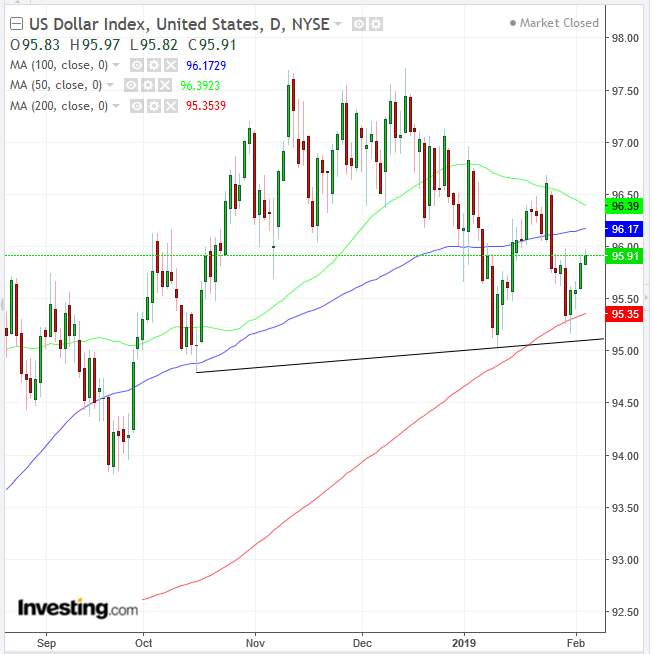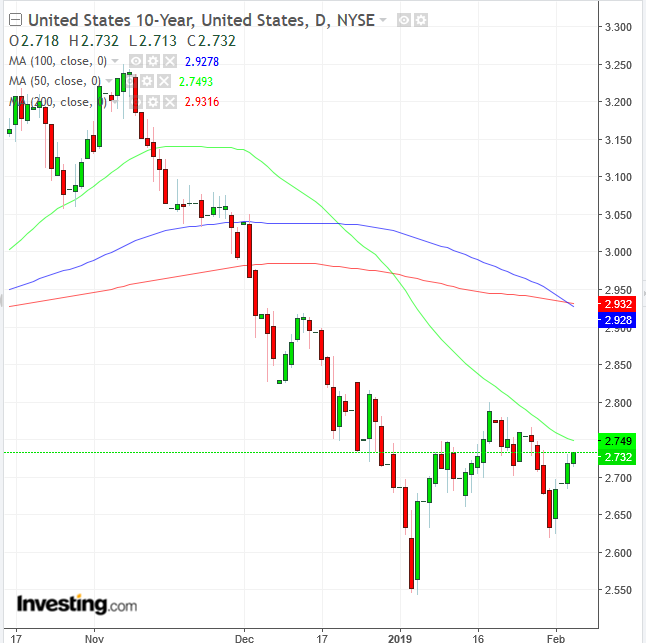- European shares climb on strong BP earnings; U.S. futures point to upbeat session
- Dollar, Treasury yields extend rally
- Oil rebounds
Key Events
Shares in Europe leaped forward and futures on the S&P 500, Dow and NASDAQ 100 bounced back this morning amid mixed corporate earnings and thin Asian volumes. Sovereign bonds and currencies drifted.
The STOXX Europe 600 gained ground for the sixth straight day, led by a rally in energy stocks after BP (LON:BP) joined a string of oil companies beating earnings expectations. This offset pessimism stemming from other companies posting softer guidance, such as chip suppliers Infineon Technologies (DE:IFXGn) and Ams (SIX:AMS). Are investors refocusing on results and beginning to disregard pessimistic forward outlooks?
During the earlier Asian session, regional shares were mixed, as most markets were closed for the Lunar new year. Australia’s S&P/ASX 200 surged 1.95 percent, staging the biggest advance in over two years as financials rallied after a probe into banking malpractices stepped short of prescribing forced break ups or tighter lending rules. Japan's Nikkei 225 fell 0.19 percent, closing in the red for the first time in four sessions, dampened by mainstay stocks’ poor performance.
Global Financial Affairs
Yesterday, U.S. equities closed higher for the fourth straight day, helped by gains in the technology sector amid thin trading and ahead of another round of earnings reports.
The S&P 500 climbed 0.68 percent, closing at the highest level since December 3. However, it’s important to note that the advance does not necessarily reflect the broader market, as it was based on volumes 20 percent lower than the 30-day average. Nine of the eleven sectors closed in positive territory, with Technology (+1.6 percent) leading the charge, followed closely by Industrials (+1.29 percent). Healthcare (-0.29 percent) was the day's laggard, followed by Materials (-0.17 percent). Technically, the SPX closed at the top of the session, after crossing above the 100 DMA but below the 200 DMA.
The Dow Jones Industrial Average gained 0.7 percent, also closing at the session's high, after it crossed above both the 100 and 200 DMAs on Monday.

The NASDAQ Composite leaped 1.15 percent higher, with NVIDIA (NASDAQ:NVDA), Adobe (NASDAQ:ADBE), Microsoft (NASDAQ:MSFT) and Apple (NASDAQ:AAPL) all ticking higher. Alphabet (NASDAQ:GOOG) sealed a 1.99 percent advance—breaking through the 200 DMA, bottoming out and closing at the very top of the session ahead of the company's closely-watched earnings report.
The Russell 2000 ranked second among U.S. majors (+0.71 percent), even amid broad optimism that the U.S. and China will soon come to a diplomatic resolution on trade.

Perhaps, the current small-cap upbeat performance derives from a stronger dollar, which weighs on multinationals' shares. However, that doesn’t explain why small caps have been outperforming for months. Moreover, industrials shares were the second-best performers after tech stocks on Monday, weakening that argument. Technically, the greenback rebounded, sealing a three-day advance, after landing on the neckline of a H&S top and the 200 DMA.

Yields on 10-year Treasurys also climbed for a third day, maintaining a positive correlation with the dollar since Friday’s nonfarm payrolls data beat. The price closed below the 50 DMA, after the 100 DMA crossed below the 200 DMA. This layered resistance projects that of the rate that challenges the January 18 highs of 2.8 percent. Should yields post a higher peak, it would indicate a bottom reversal.
Meanwhile, investors must weigh up a perceived dovish Fed on one side and strong U.S. labor data on the other. The relative calm in markets amid thin volumes belies an undercurrent of uncertainty as trade negotiations between the U.S. and China remain unresolved and the U.S. itself is drifting toward another government shutdown. HSBC analysts said that signals from the U.S. Treasuries yield curve suggest volatility ahead, while it seems corporate results are no longer beating estimates in the numbers they once were.

Meanwhile, oil rebounded from yesterday’s selloff, hovering slightly below the $55 levels, buoyed by expectations of tightening global supply following U.S. sanctions against Venezuela and OPEC cuts.
Up Ahead
-
- Trump delivers a delayed State of the Union address on Tuesday.
- On Wednesday, Federal Reserve Chairman Jerome Powell gives his first public comments following the January FOMC meeting and rate decision.
- Central banks in India and the U.K. set rates on Thursday.
Earnings
- Snap (NYSE:SNAP) reports fourth-quarter results after market close today, with EPS forecast at -$0.09 and revenues at $376.79 million. The report is expected to shed more light as to whether the stock has reached a bottom yet.
- Walt Disney (NYSE:DIS) is due to publish its results Tuesday after market close, with a $1.54 EPS forecast, down from $1.89; revenue is expected to have edged down to $15.07 billion, from $15.35 billion for the same quarter last year. Technicals signal traders are expecting a beat.
- MetLife (NYSE:MET) is due to report earnings Wednesday after market close, with an EPS of $1.28, double last year’s number, while revenue is expected to edge down to $15.89 billion from $15.75 for the same quarter last year.
- Twitter (NYSE:TWTR) is scheduled to report earnings Thursday before market open, with an EPS forecast of $0.25 and $868.24 million revenue, compared to $0.14 EPS and $686.06 million last year.
- Philip Morris (NYSE:PM) will publish corporate results Thursday before market open. EPS is expected to be $1.17, down from 1.27 for the same quarter last year, on $7.39 billion revenues, down from $8.29 billion revenue last year.
- Hasbro (NASDAQ:HAS) is expected to publish its earnings report Friday before market open. Analysts expect an EPS of $1.68, down from last February’s $2.3, and revenues of $1.52 billion, down from $1.716 million for the same quarter last year.
Market Moves
Stocks
- The STOXX 600 climbed 0.5 percent, reaching the highest in almost 12 weeks.
- The U.K.’s FTSE 100 edged 0.7 percent higher, hitting the highest in more than 12 weeks with its sixth consecutive advance.
- The MSCI Asia Pacific Index rose 0.3 percent to the highest in almost four months.
- The MSCI Emerging Market Index gained 0.1 percent.
Currencies
- The Dollar Index gained 0.05 percent to the highest in more than a week.
- The euro slipped 0.2 percent to $1.1412, the weakest in more than a week.
- The British pound slid less than 0.05 percent to $1.3036, the weakest in two weeks.
- The Japanese yen fell less than 0.05 percent to 109.90 per dollar, the weakest in more than five weeks.
Bonds
- The yield on 10-year Treasuries gained one basis point to 2.73 percent, the highest in more than a week.
- Germany’s 10-year yield rose one basis point to 0.19 percent.
- Britain’s 10-year yield increased less than one basis point to 1.279 percent, the highest in more than a week.
Commodities
- Gold declined less than 0.05 percent to $1,312.24 an ounce, the weakest in a week.
